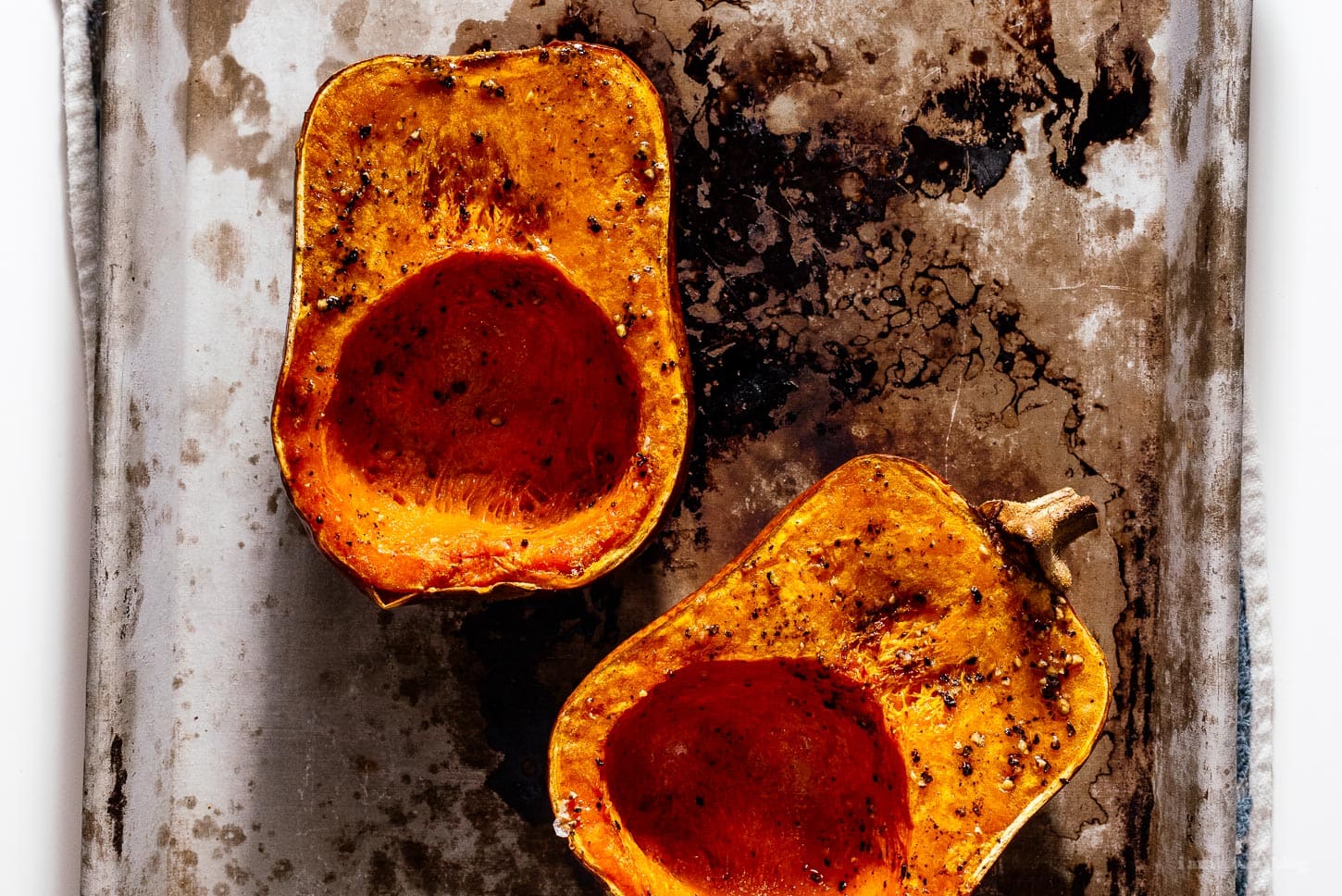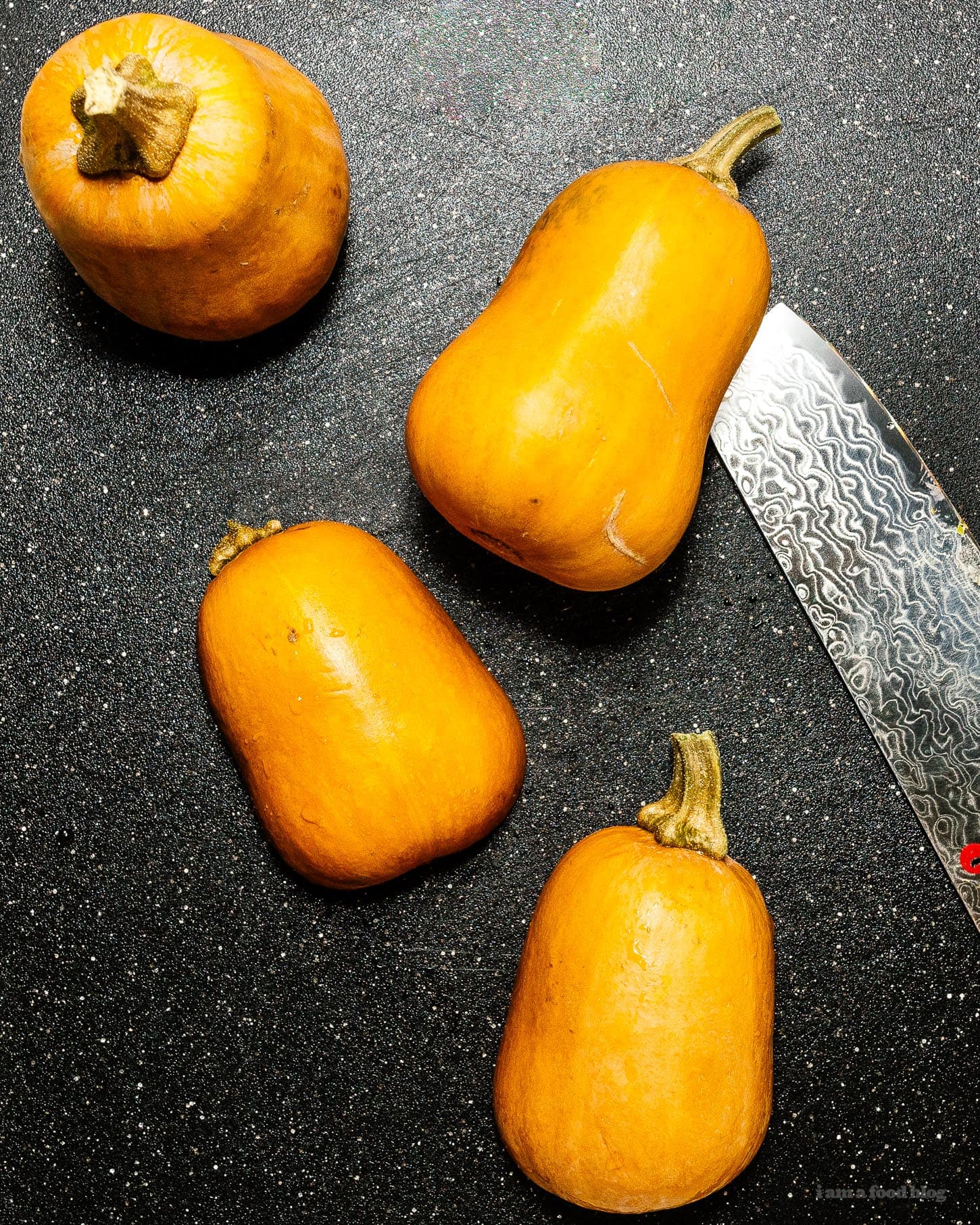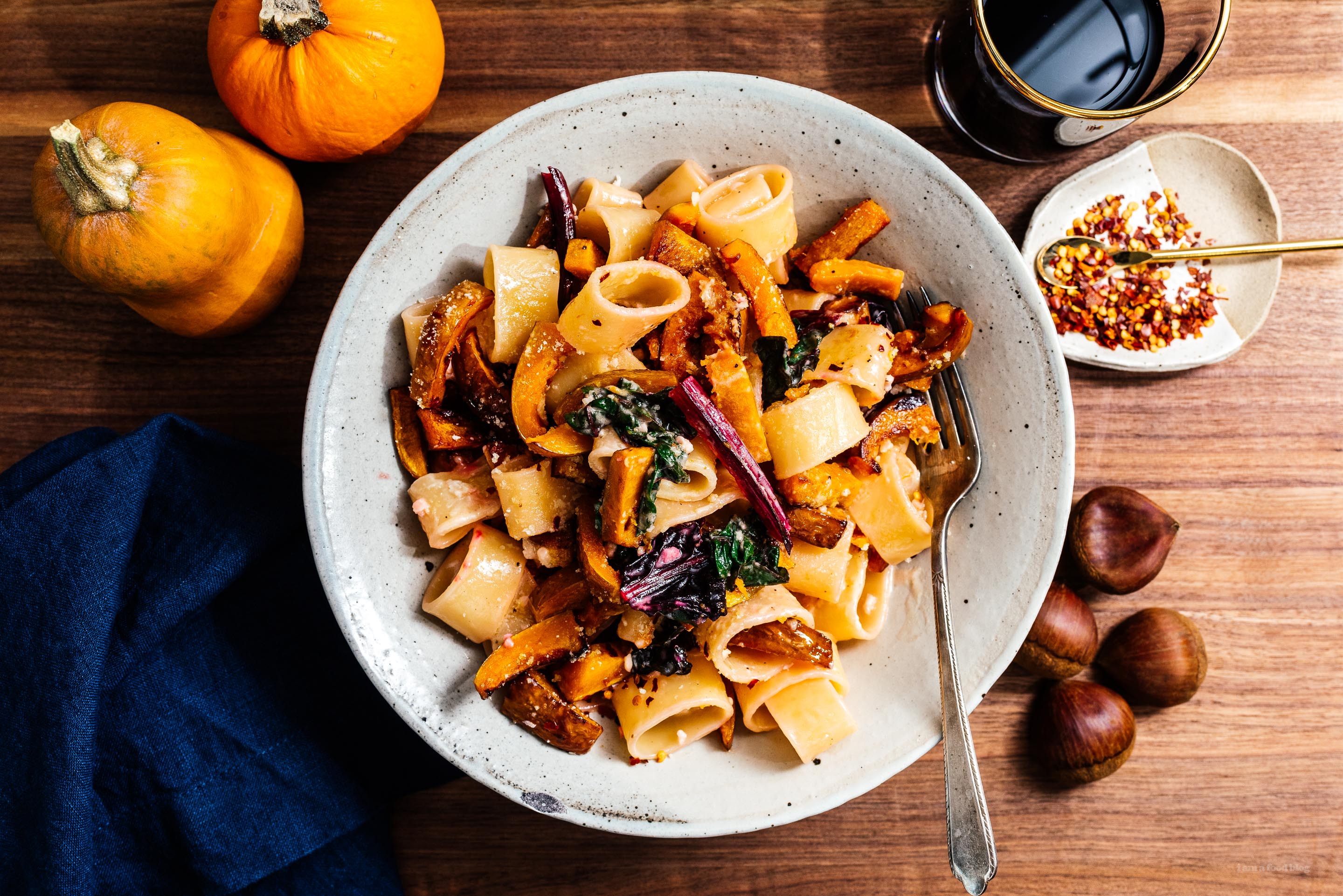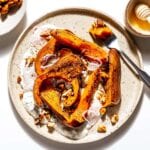everything you ever wanted to know · i am a food blog
Honeynuts are the cousins of butternuts, but believe me when I say, they are so much better.
Do you like butternut squash but sometimes find it a little too big? If so, super sweet, personal-sized honey squash is here to save the day! If you’ve ever seen what looks like a tiny version of a butternut squash, you’re lucky to have spotted a honeynut in the wild!
What is honey squash?
Have you heard of honey squash? I’ve seen it floating around menus and the internet, but the first time I saw one in real life was at a farmer’s house. It was so special – apparently I’m a nerd like that. Honeynuts are pretty rare, like a unicorn squash: They’re about to be sold in every grocery store, but for now, they’re still a farmers’ market and specialty store kind of thing.
Honeynuts are essentially tiny butternut squash created to be a tastier, smaller squash. A chef (Dan Barber) met a squash farmer (Michael Mazourek) and asked him why he couldn’t make a smaller, tastier squash. After a few years, honey nuts were born.
Honeynuts are not only smaller than butternuts, they are also sweeter. You don’t need to peel the skin, and when roasted, they take on a caramel, almost malty flavor. The flesh is smooth and tender without the stringiness of larger squash. These are the perfect personal sized squash and absolutely delicious.


The first time I saw honey nuts I exclaimed “wow, they are SO CUTE!” about 16,000 times I searched the honey nut box to find my forever honey nut and carefully rocked it home. I broke it in half, scooped out its innards, roasted it until it turned a deep golden honey color, then ate it with yogurt, pickled shallots, and walnuts with honey. So good. I felt truly blessed.
How to Roast Honey Squash
- Heat the oven. Heat oven to 425°F. Put on high heat so that the squash caramelizes and becomes soft and tender.
- Cut the honey squash in half. Wash and dry the honey nuts then use a large, sharp knife to cut them in half lengthwise, from stem to base. Use a spoon to remove the seeds and pulpy interior.
- Roast. Drizzle the cut sides with a little oil and season generously with salt and pepper. Roast, skin side up, on a foil-lined baking sheet for 20 to 30 minutes (depending on size) or until fork tender.
What does honey squash taste like?
If you love squash, honey squash tastes like the best squash you’ve ever eaten. It’s savory, sweet and nutty, with a touch of caramel and malt. This is what butternut squash dreams of. Plus, they contain twice as much beta-carotene as butternut squash!


Where to buy honey squash
Honeynut squash season runs from late September to early October. You’ll find honey squash at local farmers’ markets, Whole Foods, Trader Joe’s, and sometimes even your regular grocery store. They are very seasonal, so when you see them, pick some up! They’re becoming more and more popular, so you’ll probably see them pop up more and more.
How to choose a good squash
Honeynut squash are orange when ripe, so look for a squash without greens. You want a squash that is firm, with no soft spots and the stem attached. They will keep for quite a long time (a few months in a cool, dark place) but you should eat them when they start to wrinkle as this means they are starting to dry out.
The best way to cook it
The best way to eat a honeynut is to roast it! Roasting brings out its intense sweet flavors. Because they are so tender, you can also cook them on the stovetop, like I did here. Pan Roasted Honey Nut Squash with Creamy Garlic Pasta.


Can I eat the skin?
Yes, the skin is completely edible, just like a delicata squash. This is the best part because it means no more peeling the squash!
Honeynut Squash vs. Butternut Squash
The best part about honeynut is that it is much easier to prepare than butternut. If you hate peeling, cutting, and removing seeds from butternut trees, honey nuts are here to save the day! They are so much more tender and have a finer texture so they slice like a dream. You can also eat their skin, which is thin and similar to delicata. Win, win, win!
What can I use instead of honey squash?
If you can’t find honey squash, its closest cousin is butternut, although butternuts are not as sweet and a bit stringier. You can also use any other winter squash.
If you like honey squash, try this Pan Roasted Honey Squash with Pasta! It’s fall in a bowl: creamy and cozy pasta with garlic, honey nuts and Swiss chard.
Have you eaten honey nuts? Do you want? Tell me all your honey nut dreams!


Honey Nut Squash and Honey Walnuts
Very sweet, personal-sized honey squash is here to save the day!
Serves 1
- 1 honey squash
- 1 shallot thinly sliced
- 2 teaspoon vinegar
- 1 teaspoon sugar
- 1/2 tablespoon butter
- 1 tablespoon Honey
- 1/4 cup walnut halves
- 1/4 cup Greek yogurt
- 2 tablespoon cucumber shredded
- 1 pinch ground cumin
-
Heat oven to 425°F. Carefully cut your Honeynut squash in half and remove the seeds. Drizzle with a little oil and season generously with salt and pepper. Roast in the oven, skin side up, on a foil-lined baking sheet, for 25 to 30 minutes, or until golden and tender.
-
While the squash roasts, prepare your side dishes if desired. Quickly marinate your shallots: Place the chopped shallots in a small bowl with vinegar, sugar and 2 tablespoons of water. Stir and let sit while you prepare the honey nuts.Roast your nuts with honey: In a small non-stick pan, melt your butter with the honey over medium heat. Add the nuts and mix with the honey and butter until they bubble and caramelize. Remove the nuts from the pan and let them cool completely.
-
In a small bowl, mix the yogurt, cucumber and a pinch of cumin. Taste and season with salt and pepper. Pour onto a plate and add the squash on top. Garnish with shallots and honeyed walnuts. Appreciate!
Nutrition Facts
Honey Nut Squash and Honey Walnuts
Amount per serving
Calories 502
Calories from fat 230
% daily value*
Fat 25.5g39%
Saturated fat 5.5 g34%
Cholesterol 18 mg6%
Sodium 74mg3%
Potassium 1213 mg35%
Carbohydrates 62.6g21%
Fibers 12.1g50%
Sugar 29.9g33%
Protein 16g32%
*Percent Daily Values are based on a 2,000 calorie diet.














Post Comment